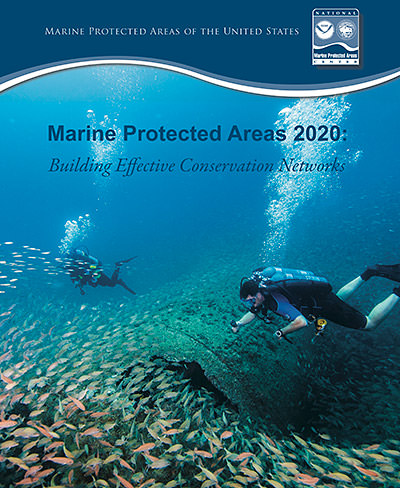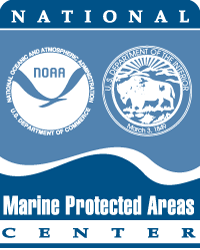Chances are you've visited a marine protected area and maybe didn't even know it. If you've gone fishing in central California, diving in the Florida Keys, camping in Acadia, swimming in Cape Cod, snorkeling in the Virgin Islands, birding in a Gulf Coast wetland, hiking along the Olympic Coast, or boating in Thunder Bay, you've probably been one of thousands of visitors to a marine protected area (MPA).

About U.S. MPAs
Learn about the many types of MPAs in U.S. waters and how we are moving toward MPA networks in this new magazine.
What is an MPA?
"Marine protected area" is a broad term for a park or other protected area that includes some marine or Great Lakes area. Learn more about MPAs in this fact sheet, Marine Protected Areas: Tools for a Healthy Ocean. The International Union for the Conservation of Nature (IUCN) defines a protected area as “a clearly defined geographical space, recognised, dedicated and managed, through legal or other effective means, to achieve the long term conservation of nature with associated ecosystem services and cultural values.” IUCN guidance for applying this definition to marine areas is here.
What kinds of MPAs are there?
A marine reserve or "no take" MPA is a highly protected type of MPA where removing or destroying natural or cultural resources is prohibited. Marine reserves are rare in the United States, with about 3 percent of U.S. waters in these no-take areas. Reserves protect whole ecosystems, allowing them to return toward a more natural and balanced state. Monitoring studies from marine reserves have shown that biomass, the size and density of organisms and the richness or diversity of species all increase within marine reserves. Reserves can be an effective way to preserve biodiversity by protecting communities and providing refuge for rare organisms.
Other types of MPAs include multiple use MPAs, and MPAs that allow different uses based on designated zones.
Get Involved
Find out how you can help our oceans and marine protected areas.
 Marine Protected Areas
Marine Protected Areas